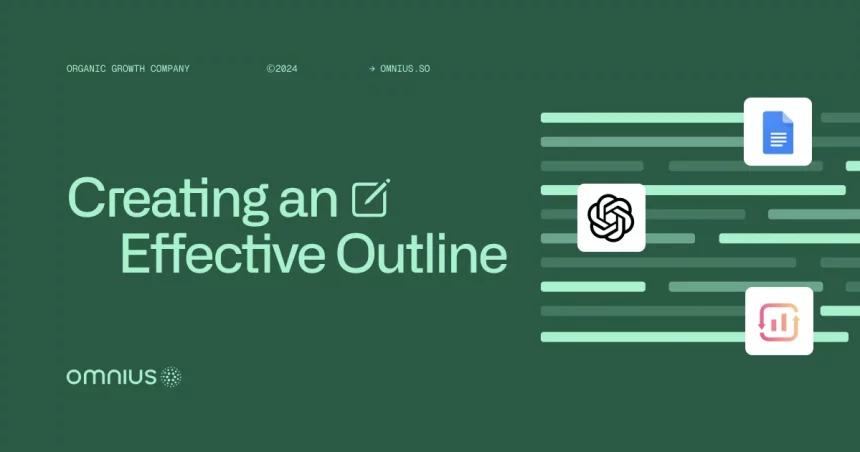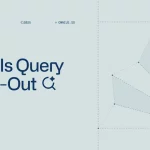Are you struggling to improve the quality and flow of your content?
Whether you’re drafting a blog post, an article, or any other piece of content, starting without an outline can waste your time and impact the clarity of your message.
Still, many writers skip this crucial step and dive straight into writing, leading to disorganized ideas and frustrating rewrites.
We created a step-by-step guide on how to create an outline to ensure your content flows logically and engages your readers.
What is an Outline?
An outline is a valuable tool for organizing your thoughts when communicating ideas.
It is especially useful at the beginning of a project, as it offers a big-picture view and guides your approach.
Whether you’re preparing a speech, writing a blog post, or planning a book report, an outline helps highlight the key points you want to cover.
A strong outline requires critical thinking to select the most important ideas and follow a clear structure.
Benefits of an Outline
Here are the benefits of creating a good outline:
- Enhances communication – Helps organize your thoughts into a logical structure, making the writing process smoother and improving the flow and clarity of your message.
- Strengthens clarity and arguments – Clarifying points and highlighting supporting details makes it easier to develop strong arguments, helping you craft a convincing message.
- Improves organization – Improves organization by guiding the flow of your paper and structuring key points for clarity.
- Fosters idea development – Reveals connections between ideas, making it easier to develop cohesive paragraphs and ensuring a natural flow throughout your writing.
- Simplifies revisions – Serves as a useful reference during revisions, helping you spot inconsistencies or areas needing improvement and making the editing process more effective.

Key Steps Before Creating Your Outline
Here are some key factors that you need to consider before crafting your outline:
1. Understand Your Target Audience
Before drafting your content, it’s crucial to know who you’re writing for. This ensures your content resonates with your audience.
Here are a few ways to get to know your target audience better:
Search Intent
Search intent refers to the purpose behind your target search query or keyword. There are four types:
- Informational – The user is looking to learn something.
- Navigational – The user is searching for a specific website.
- Commercial – The user is comparing solutions.
- Transactional – The user is ready to make a purchase or take action.
Your content must align with the search intent to keep users engaged. If it doesn’t, they’re likely to leave the page.
Audience Knowledge Level
Determine whether your audience consists of beginners, intermediate readers, or experts. This will shape the depth of information and the tone of your content.
For example, if your readers are highly knowledgeable, avoid over-explaining basic concepts. Instead, focus on advanced insights and adapt your language to suit their expertise.
Geographic Considerations
If you’re writing for a global audience, avoid using culture-specific references or idioms that might confuse readers.
On the other hand, if your content is for a specific region or country, using local terms or expressions can help build rapport and trust with your audience.
Marketing Funnel Stage
Consider where your audience is in the marketing funnel. Are they just gathering information, comparing solutions, or ready to purchase?
- Top of the Funnel – Readers are just becoming aware of the problem you solve.
- Middle of the Funnel – Prospects are considering solutions and exploring options.
- Bottom of the Funnel – Prospects are ready to choose a solution.
2. Define Clear Goals for Your Content
Before outlining your content, it’s essential to set specific objectives. Knowing your goal will guide your content strategy and help you choose the right approach.
Avoid vague goals like “increase brand awareness” or “boost website traffic.” Instead, focus on more actionable and measurable targets.
Here are some examples of effective content goals:
✅ Rank in the top 10 search engine results for your target keywords
✅ Attract backlinks from reputable sites in your industry
✅ Highlight a specific product, feature, or service
✅ Boost brand visibility through PR efforts
✅ Generate leads, such as by getting users to download a resource, join a mailing list, fill out a form, or register for a webinar
✅ Drive conversions by incorporating clear calls to action (CTAs)
✅ Encourage social media sharing and engagement
3. Research and Choose the Right Keywords
Before drafting your content outline, it’s important to identify your target keywords.
This helps shape the type of content you create and the subtopics you include.
For example, a product page is better suited for transactional keywords, while an explainer article works best for informational keywords.

When selecting your main keyword, aim for one that balances good search volume (the number of monthly searches) and a manageable keyword difficulty (KD) score.
The KD score, ranging from 0 to 100, indicates how challenging it will be to rank for that keyword, with 100 being the hardest.
5 Steps to Creating an Effective Outline
Step 1: Dive Deep into Your Topic
The first step in creating a solid content outline is thorough research.
Gathering information, insights, and expert opinions will ensure your content is authoritative and comprehensive.
Here is how you can get started:
Explore top websites and blogs in your industry
Start by checking out leading websites and blogs in your industry.
These sources often share the latest trends, best practices, and important industry updates.
Take note of recurring themes or topics relevant to your content.
Look into studies and academic research
Academic studies and research papers are essential for data-driven content.
They offer detailed analysis and can significantly boost your content’s credibility.
You can use sites like Google Scholar, Science.gov, and ResearchGate to ensure you share reliable information.
Seek out recent studies related to your topic, and save key findings to incorporate into your outline.
Gather quotes and key statistics
While researching, collect powerful quotes from industry experts and relevant statistics. These details will strengthen your arguments and provide a solid foundation for your claims.
Organize this information under appropriate headings in your outline for easy reference during the writing process.
You can use sites like Statista, Statistic Brain, and Knoema to find relevant statistics.
Review competitor content
Examine what your competitors are publishing.
This can give you insights into what works well with your target audience.
Identify any gaps in their content that you can address more comprehensively in your work.
Keep in mind that 96% of consumers have watched an explainer video to learn more about a product.
So check if their structure is more engaging than yours or if they include more visual content in their blogs than you do.
For example, text-only articles can be hard to read and not interesting to your audience, while the more interesting content is the one that has some structure.

Step 2: Define Your Core Ideas
After completing your research, focus on extracting the most important information that aligns with your content goals.
These core ideas will shape the main sections of your outline and serve as the foundation for your final piece.

This step is crucial as it helps structure your content.
Here, you’ll determine which topics are necessary to achieve your objectives and engage your audience.
Think of these core ideas as the backbone of your content, each supporting and reinforcing your overall message.
They should be clear, concise, and directly tied to your goals.
By carefully choosing these ideas, you ensure that every part of your content is meaningful and impactful.
Step 3: Organize Your Outline With Headings and Subheads
Once you have all your initial ideas and key points documented in one place, start grouping similar ideas into logical sections.
As you do this, think about your main headings.
- Carefully choose your main heading(H1)
- Map out the H2s you’ll include.
- Add any applicable subheadings to your outline (
) under your H2s.
Here’s how you might structure your content:
For example, let’s say you’re writing an article about content writing strategies to help clients boost their blog’s SEO performance.
Based on the top SERPs for the keyword “content writing tips,” you decide to make actionable tips for writing SEO-friendly content the main focus of your article.
After researching the topic, you create a mind map with ideas for related subtopics, such as keyword research, writing for readability, and analyzing results.
You also list questions you want to cover in the article, like “How often should keywords appear?” or “What tools can help improve content?”
It’s time to organize those ideas into a logical structure and hierarchy.
Your initial outline might look something like this:

By mapping out your outline with headings and subheadings, you create a clear structure that guides your writing process and ensures all the key topics are covered.
It’s also important to note that using heading tags isn’t just for aesthetics but also for following SEO guidelines, as they help search engines better understand the structure of the text, identifying what is the main title (H1) and what are the subheadings (H2, H3, etc.).
Step 4: Refine Your Outline for Better Flow and Structure
Review your sections and headings by reading them aloud to check if they follow a logical order.
You may notice that some sections don’t flow as well as expected.
Rearrange them until everything makes sense and the content flows naturally.
If you spot gaps or inconsistencies in the structure, consider adding subheadings to improve clarity and organization.
For example, since the article aims to inform readers about content writing strategies, we could add a new H2 heading for content writing tools.
This way, we can explore the topic more deeply than we would if it were just an H3 subheading.
Step 5: Add Detailed Notes to Each Section
Under each heading, expand your outline by adding key details about what you want to cover in that section:
- What are the main points you want to convey?
- What key information needs to be included?
- Are there any specific sources or research to reference?
- Should internal links or product mentions be added?
- Any calls to action (CTAs) to feature?
These notes should be specific and clear.
Whether you write the content yourself or pass it to a writer these instructions provide valuable context and make the writing process smoother.
Tools to Speed Up Your Outline Creation
There are many tools available to help create content outlines efficiently.
While they support brainstorming and organizing ideas, they serve as enablers rather than full solutions.
Here are some useful tools to consider:
1. Google Docs

Google Docs is a free, easy-to-use tool for drafting outlines and content.
Its simple formatting options allow for the creation of structured documents.
The left-hand panel provides a clear overview of the document’s outline, making it easy to navigate and restructure sections as needed.
2. Surfer SEO

Surfer SEO is a powerful tool designed to help optimize content by providing data-driven insights on keyword usage, structure, and SEO best practices.
It analyzes top-performing pages, suggesting relevant headings and subtopics to include for better SEO optimization.
Additionally, Surfer SEO helps balance keyword usage and content depth, ensuring a well-structured, optimized outline that improves search rankings.
3. ChatGPT

ChatGPT is an AI-powered tool that assists with brainstorming and outline creation.
It can generate multiple outline options by inputting the article title and target audience.
These outlines can be mixed, matched, and refined to fit the content strategy, helping streamline the content planning process based on SERP analysis.
To Wrap Things Up
Creating an effective outline is the foundation of any well-structured piece of content.
By following this step-by-step guide on how to create an outline, you can transform scattered ideas into a clear and organized plan, making writing easier and more efficient.
If you need help ensuring your work flows logically and communicates your message effectively, Omnius is here to help.
Schedule a 30-minute call with our SEO experts to dive deeper into content writing and boost your organic growth!
Nguồn: omnius.so











